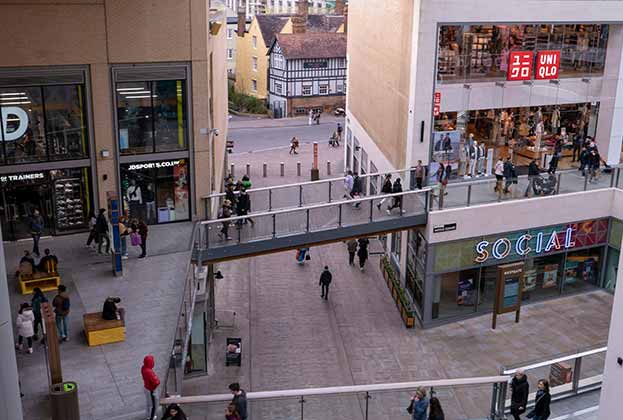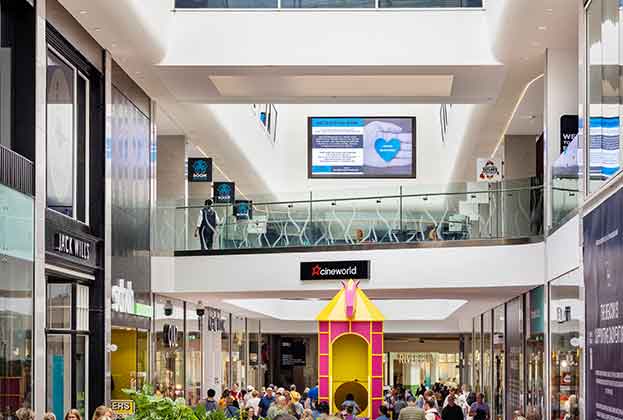The South West’s retail provision is diverse: a mix of traditional city centre high streets, prime and local shopping centres and historic parades. We are currently experiencing a structural change in the way people shop with the growth in online retail changing customer behaviour. Community shopping centres seem to be proving more resilient than other retail sectors: why is this?
Recent Savills and Ellandi research notes that those centres that have a diverse tenant mix are better able to weather the current retail climate. Yate Shopping Centre just outside Bristol is typical of the sort of community shopping centre that is succeeding in adapting to its catchment’s needs by incorporating an onsite gym, children’s soft play area and a cinema.
The Galleries, pictured above, in the city centre is another excellent example of a centre that sets itself apart by providing a mix of local and national operators. The inclusion of a unique range of local businesses, leisure occupiers and less traditional tenants, such as gyms, office co-working space, or even self-storage firms, all serve to broaden the attraction of a scheme, boost footfall and, in turn, support those occupiers that choose to trade from these locations.
For the landlord, diversification reduces reliance on those national retailers who are currently under pressure to review their store portfolios. There is a wider ongoing discussion regarding the valuation of property and whether the traditional methods correctly price in the inherent risk that new technology can pose to narrow sectors of the market.
Secondly, the businesses which trade from community shopping schemes typically have less online penetration, or their products and services cannot easily be offered online, which forces customers to visit physical stores. The Savills and Ellandi research highlights that 70 per cent of customers in community shopping centres would not have made their purchases online.
For the community, unshackling a shopping centre from being solely a place to purchase consumable items allows it to become a genuine attraction. There is both financial and emotional value to be realised through creating a centre that can serve as a community space in which people can relax, exercise, work flexibly and provide a space for children to play; a place people will look forward to visiting.
And yes, there will be some difficult financial decisions along the path to cultivating a viable environment in which retailers will choose to trade, but the long-term benefits of future proofing a centre asset should be worth it.
The community shopping centre offers an exciting proposition. Various macro and micro drivers have uniquely positioned such centres to be amongst the most adaptive and nimble: key stakeholders must recognise this. As can be seen across the South West, relatively small developments and changing attitudes towards asset management, leasing and scheme management can support a scheme’s viability, benefitting landlords, investors, and occupiers.
Further information
.jpg)









